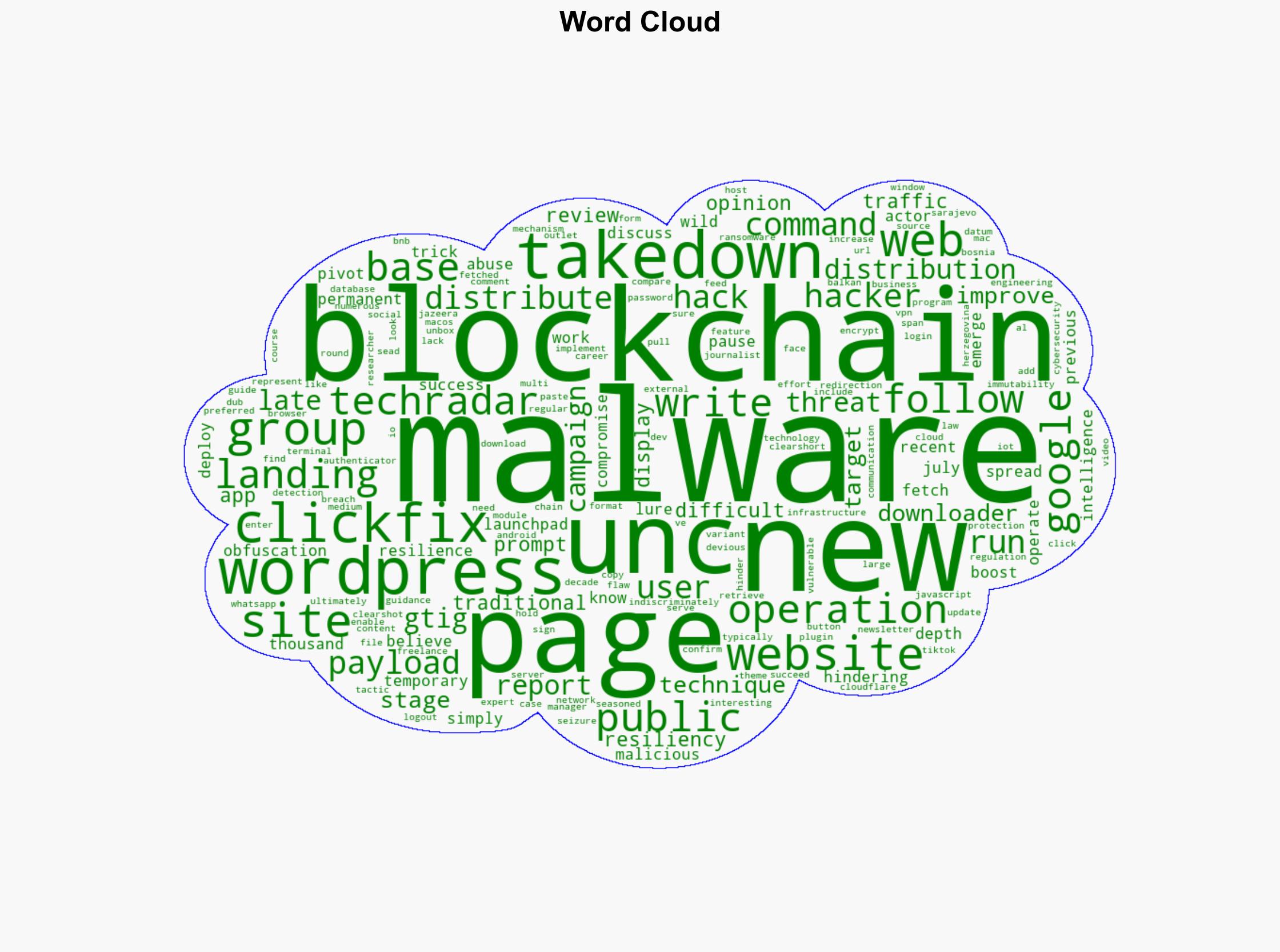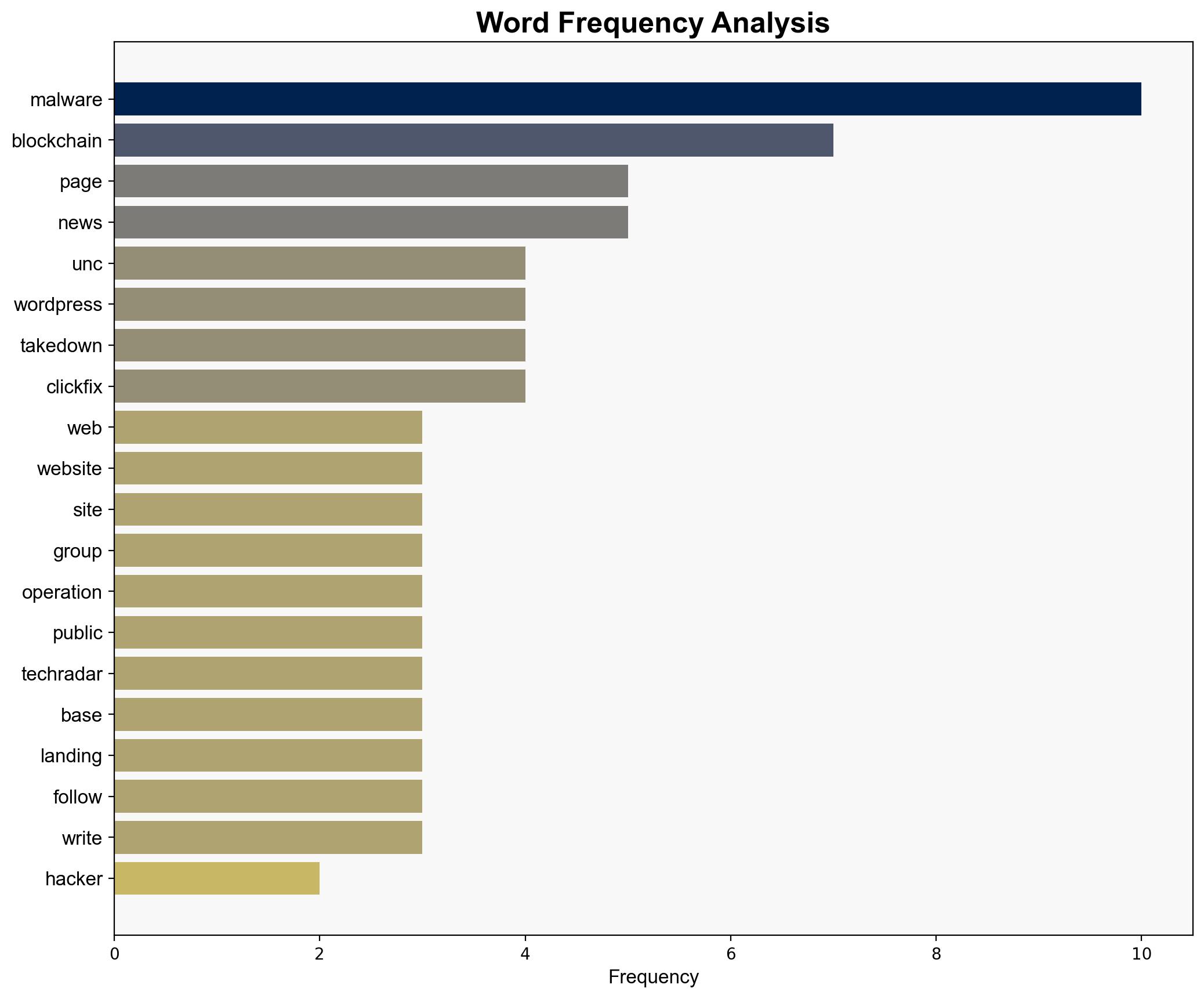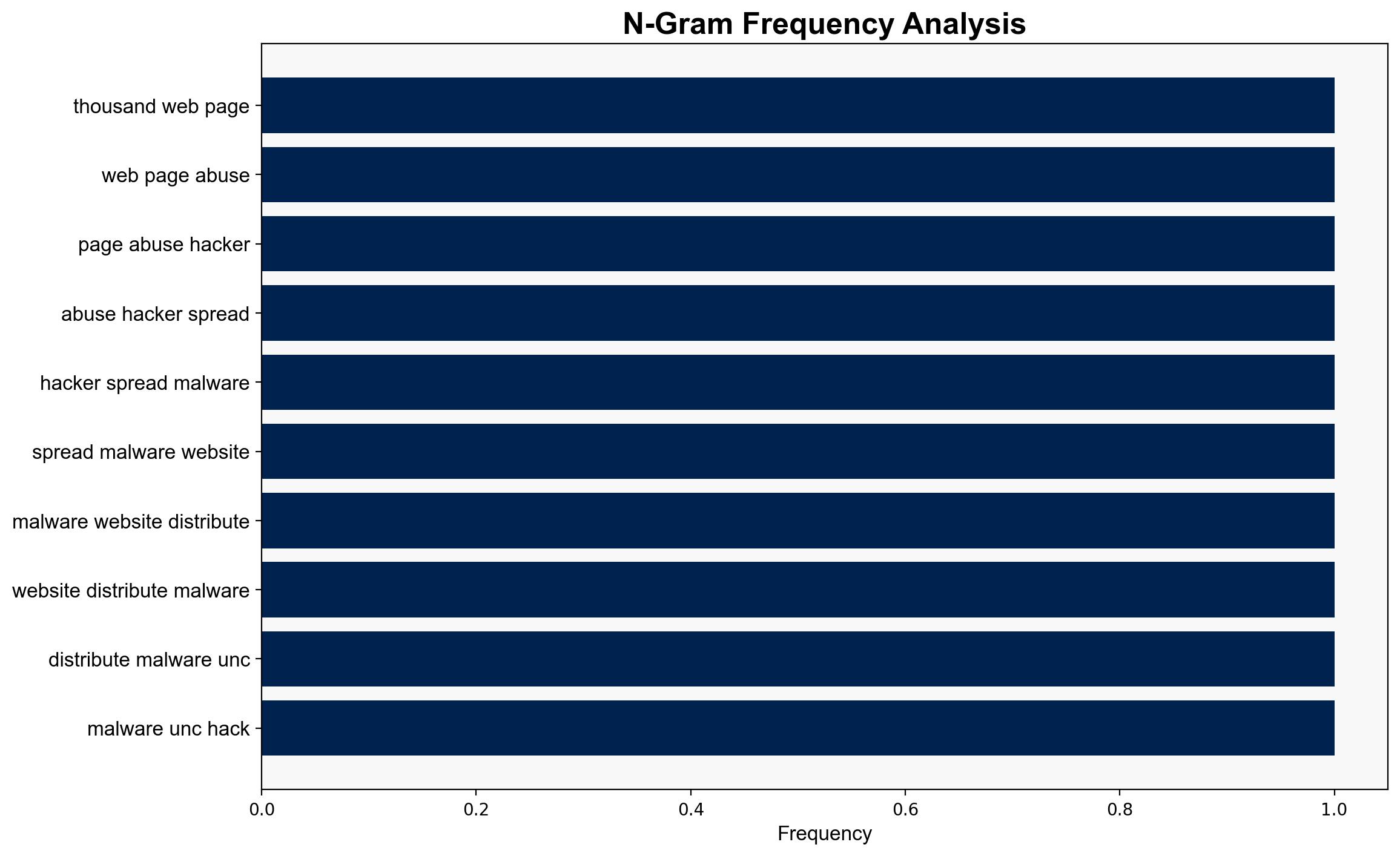Thousands of web pages abused by hackers to spread malware – TechRadar
Published on: 2025-10-17
Intelligence Report: Thousands of web pages abused by hackers to spread malware – TechRadar
1. BLUF (Bottom Line Up Front)
The most supported hypothesis is that a new threat actor group is leveraging blockchain technology to enhance the resilience of their malware distribution campaigns. This hypothesis is supported by the observed use of blockchain to obfuscate and distribute malware payloads, making takedown efforts more challenging. Confidence level: Moderate. Recommended action: Enhance monitoring of blockchain transactions and strengthen defenses against social engineering tactics.
2. Competing Hypotheses
1. **Hypothesis A**: A new threat actor group has emerged, utilizing blockchain technology to distribute malware, thereby increasing the resilience of their operations against takedown efforts.
– **Supporting Evidence**: The use of blockchain for payload distribution and obfuscation, as well as the indiscriminate targeting of vulnerable WordPress sites.
2. **Hypothesis B**: Existing cybercriminal groups are pivoting to new techniques, including blockchain, to enhance their malware distribution capabilities due to previous successes and increased takedown pressures.
– **Supporting Evidence**: The temporary pause in operations suggests a strategic pivot rather than the emergence of a new group.
Using ACH 2.0, Hypothesis A is better supported due to the specific mention of new obfuscation techniques and the emergence of a new threat actor group in the intelligence report.
3. Key Assumptions and Red Flags
– **Assumptions**: It is assumed that the use of blockchain is primarily for resilience and obfuscation rather than other potential motivations such as financial gain.
– **Red Flags**: Lack of detailed information on the identity of the threat actor group and their long-term objectives. The temporary pause in operations could indicate a strategic deception or regrouping.
– **Blind Spots**: Potential underestimation of the adaptability of existing cybercriminal groups to adopt new technologies.
4. Implications and Strategic Risks
– **Cybersecurity Risks**: Increased difficulty in traditional takedown operations due to blockchain’s immutability.
– **Economic Risks**: Potential for widespread disruptions if critical infrastructure websites are compromised.
– **Geopolitical Risks**: Attribution challenges could lead to geopolitical tensions if state actors are suspected.
– **Psychological Risks**: Increased public fear and mistrust in digital platforms, particularly those using blockchain technology.
5. Recommendations and Outlook
- Enhance blockchain transaction monitoring to detect and disrupt malicious activities.
- Strengthen defenses against social engineering tactics, particularly those exploiting WordPress vulnerabilities.
- Scenario Projections:
- Best Case: Successful identification and neutralization of the threat actor group through enhanced monitoring and international cooperation.
- Worst Case: Widespread malware outbreaks affecting critical infrastructure, leading to significant economic and social disruptions.
- Most Likely: Continued adaptation by cybercriminals to leverage blockchain, necessitating ongoing cybersecurity innovations.
6. Key Individuals and Entities
– Google Threat Intelligence Group (GTIG)
– Sead (journalist)
7. Thematic Tags
national security threats, cybersecurity, counter-terrorism, regional focus




